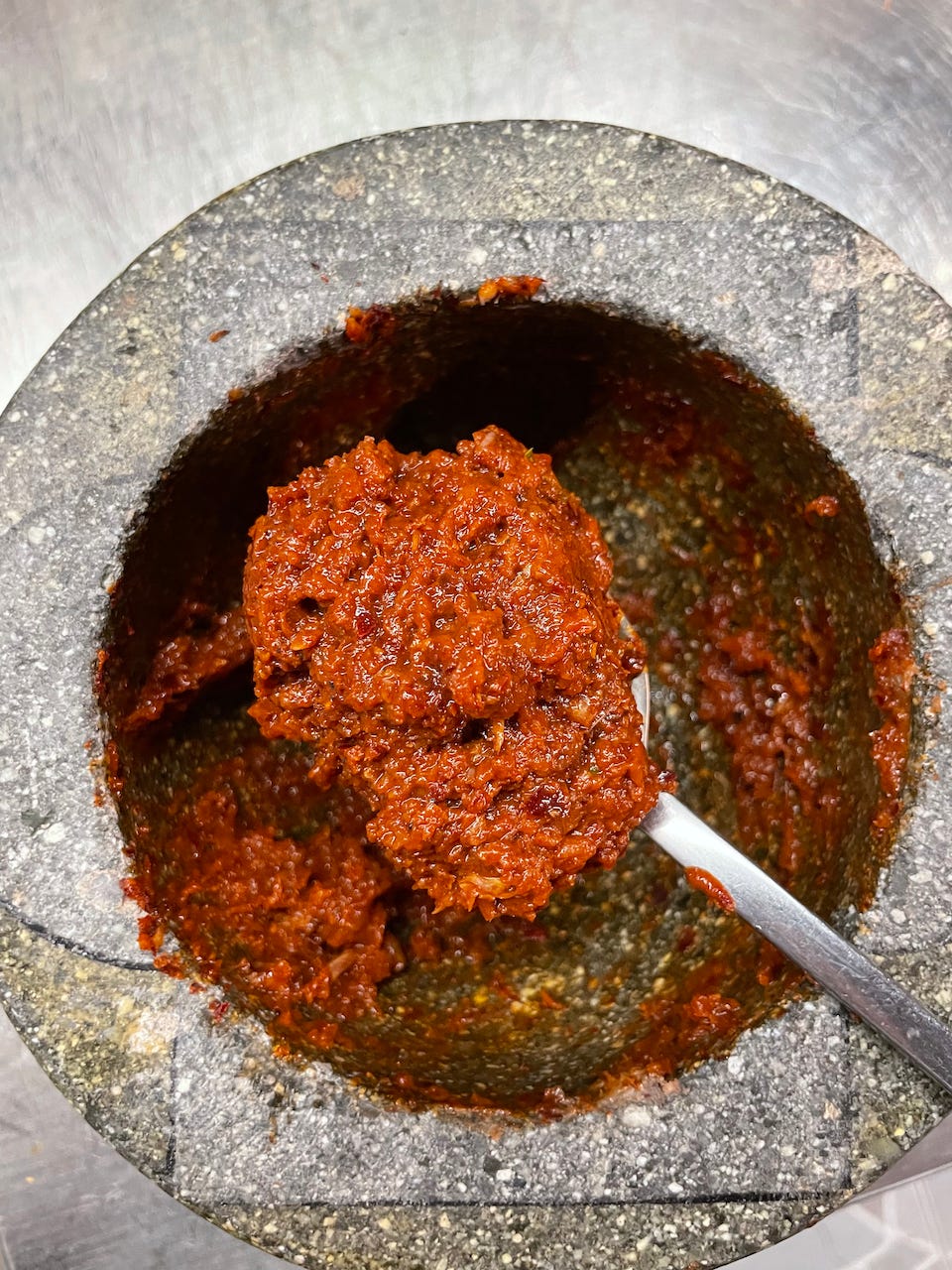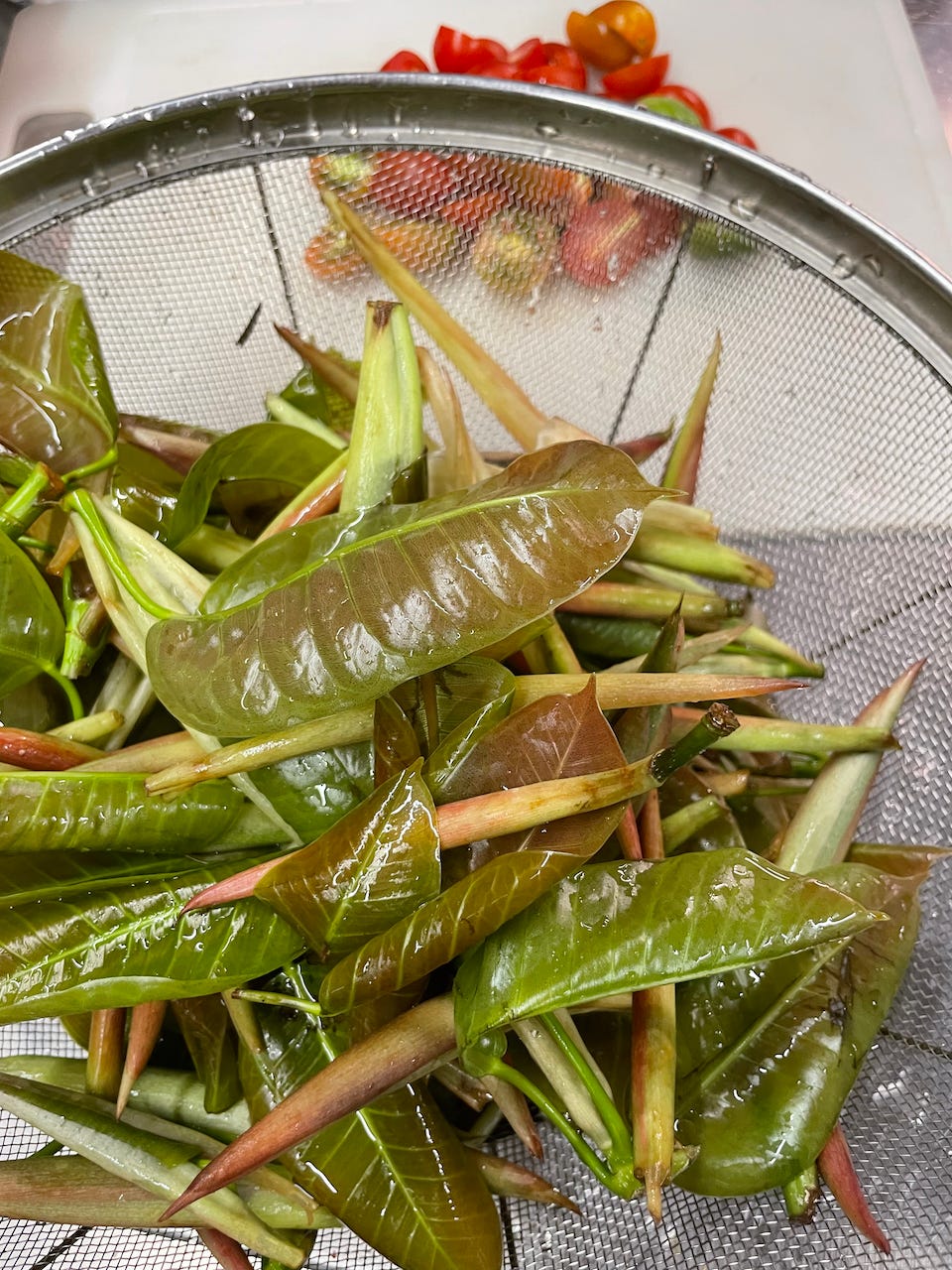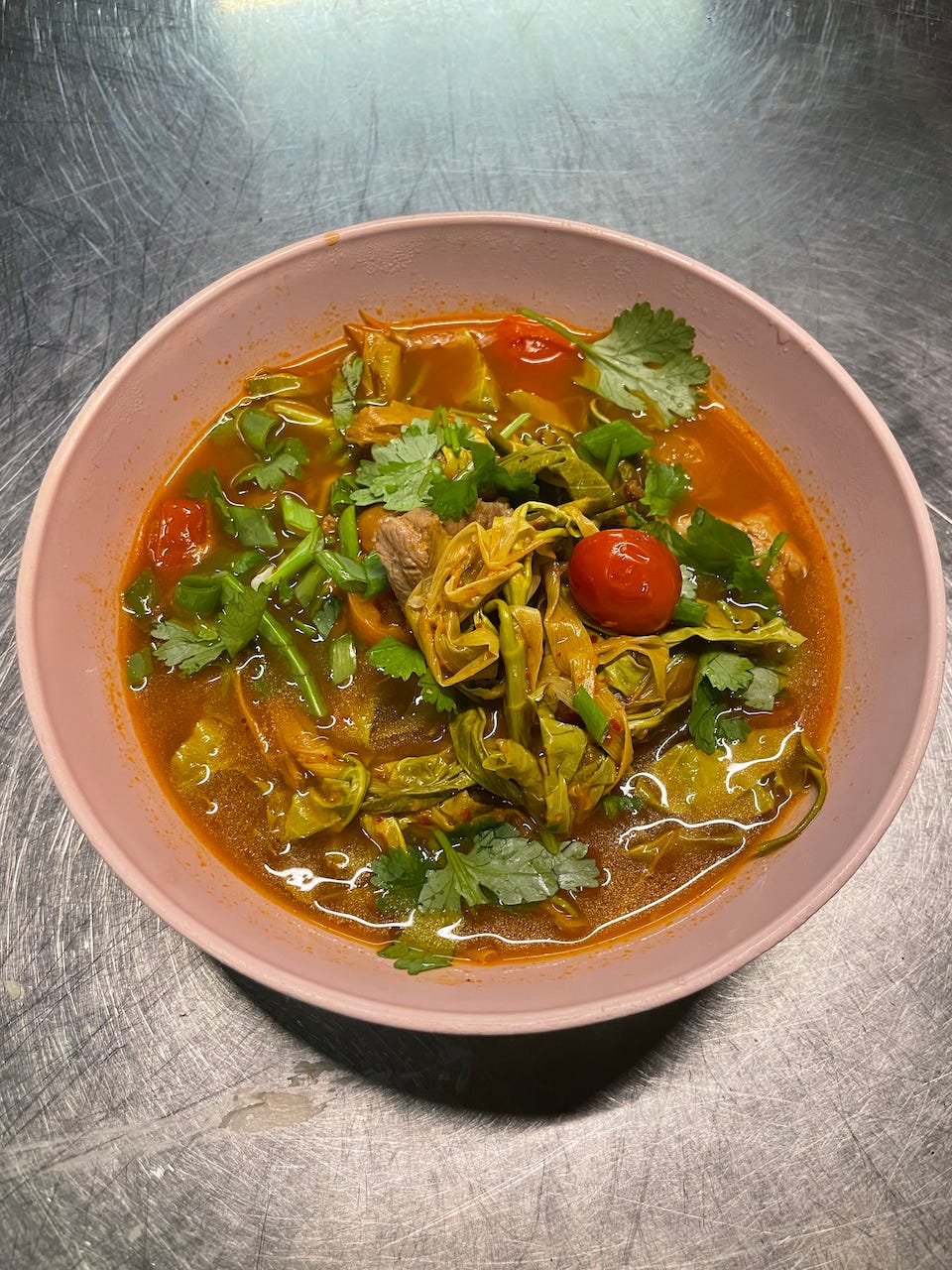A while back we purchased a small piece of land in a village near the Mae Rim River where we hope to build a house in the next couple of years. The house we live in now is pretty swell but it was built as a vacation shack for a Bangkok couple and was never meant as a long term residence…it lacks in amenities (like a proper kitchen) and, despite the charm of it’s setting next to a rice field, the neighbors are a little too close for comfort. The new plot is smaller but has great feng shui (it is shaped like “thung ngoern” or a coin purse) and the neighbors aren’t breathing down our necks. It’s also close to a bunch of friends who live over there.
Most of the lot has been cleared to make way for construction but we kept as many of the established trees as we could, all of which either act as shade, provide food or both. There is a small concrete cottage on it that we are renovating and will likely move into while building the main house…if we manage to sell our current home. We kinda have to; we need the money to build the new house!
Today we were over there overseeing some of the work being done and noticed that one big tree we kept, Ton Phak Heuat, was sprouting it’s young leaves. It so happens that these leaves are main ingredient for one of my favorite Northern Thai dishes, Kaeng Phak Heuat so we went about harvesting some for our dinner pot.
The way the leaves are harvested is you chop the whole damn branch off and then pick off the leaves. I have learned not to ask more than a cursory “why” when something like this happens because the answer is invariably “because that’s how it’s done; don’t worry, it will grow back”. Here is my wife, Kung, doing the dirty work:
We gathered the leaves and buggered off home to make dinner. Both of us have eaten the dish countless times but neither of us has actually made it before, so I turned to one of my favorite online references, Lanna Food by the Chiang Mai University Library. This website exists in some form in the ether, I suspect by cache as the home page does not seem to function anymore. Anyway, check it out as long as it stays visible, it is a treasure trove. The recipes are rudimentary at best and it helps to have knowledge of Lanna cuisine when using them as the measurements are pretty much estimates.
This is a boiled curry, which is the dominant technique for Northern Thai kaeng. You make a basic curry paste,
in this case just dried chilies, garlic, shallots, shrimp paste (I was expecting plaa rak, the local fermeneted freshwater fish, and Kung was too but the recipe called for shrimp paste, so..) and rock salt, boil it with chopped pork ribs or shoulder until they are tender, add the Phak Heuat and some cherry tomatoes,
adjust the seasoning and Somchai’s your uncle. A handful of coriander leaves and green onion tossed on top finishes it off:
Phak Heuat (a variety of Ficus) has a really nice texture, sort of like a collard greens when they are fully cooked and tender, a pleasant sour/tannic taste and with the sour-sweet- umami of the tomatoes, the unctuousness of the meat, the saltiness of the shrimp paste (and the salt, duh) plus the richness the curry paste adds, the resulting dish is quite nice and very morish.
This is a good illustration of how cuisine is developed: you have something at hand, you make something that is nourishing and tasty and eventually it becomes culture. This is exactly what drew me to Northern Thai food from the start: local and seasonal ingredients, local knowledge, local palate, simple dishes but unlike anything I had ever had before. It still turns me on, baby.





Hope when we get back over there you are doing food tours or even a cooking class or 3...
In southern Yunnan, in a Dai/T'ai Lu Household, I had these cooked tempura style, one side dipped in a flavoured rice flour batter then floated in oil. Fab textures